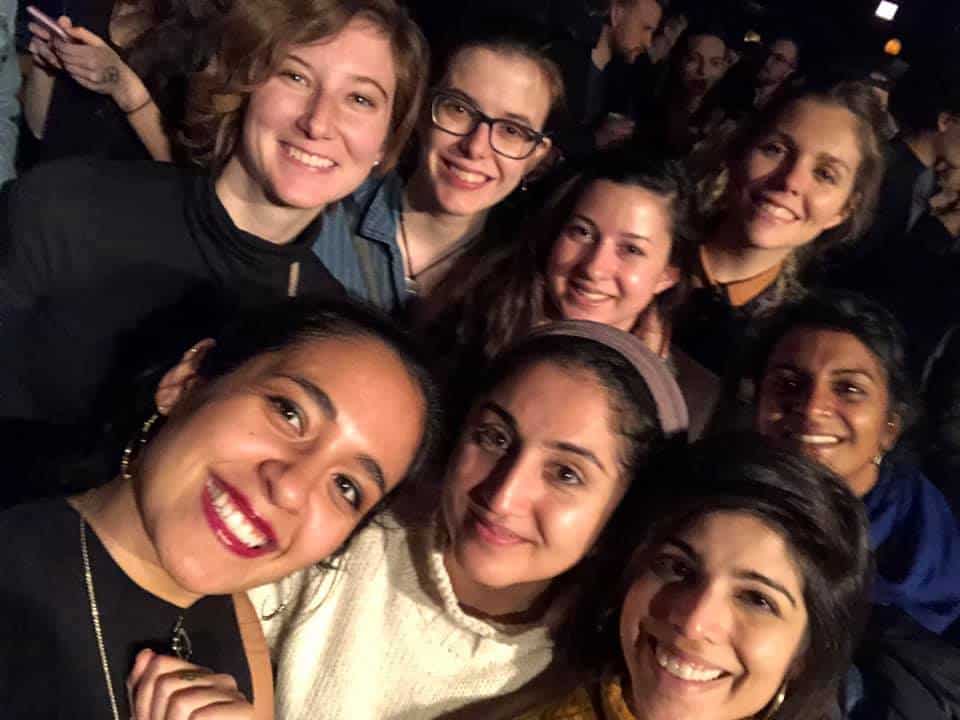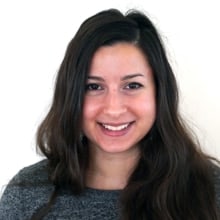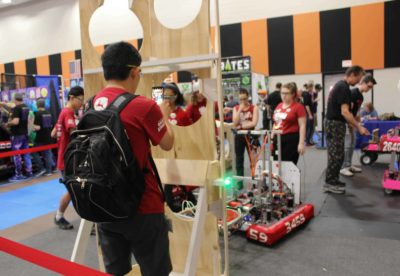
In early March, bundled for the ungodly temperatures I wasn’t used to, I sat in a Lyft headed from downtown to southeast Chicago. Chatting with my driver, I learned he had four sons, and one had just switched colleges. He had originally been studying to get into dentistry but decided the program wasn’t right for him.
“Just didn’t like dentistry?” I asked.
“No. He said there wasn’t anyone who looked like him,” he responded.
As a black student, his son wasn’t able to find a community among his peers through his dentistry-track classes, and he only had one black professor. He didn’t only switch out of those classes — he decided to go a completely different school. The feeling of not belonging in the program would ultimately be strong enough to force him to change careers.
“Belonging” would be a theme throughout my time in Chicago. I was headed to visit a Project SYNCERE class at Southeast Area Elementary School, a school with a 96% Hispanic student population. I was greeted at the door by the project’s founder, Jason Coleman, who had left his corporate job in engineering to start the nonprofit — an organization now serving 3,500 underrepresented students each year through STEM project-based programs.
“I knew there were other students like me who were really smart in math and science and who could succeed if they only had the chance to become exposed to these careers early on,” Coleman told me. He made it his mission for minority students like him to feel they had a place in engineering careers.
That same evening, I’d hear something very similar. In the makerspace at DePaul University, I met with members of the Chicago Knights Robotics team, who were avidly preparing for an upcoming regional robotics competition.
Mentor Jackie Moore spoke of the importance of having a place for students, regardless of school or background (several students in the group were homeschooled), to join competitive robotics.
“It’s an opportunity for them to understand that they belong, and I can’t stress enough the need for young people to feel they belong,” she said. “When you feel that you’re outclassed and therefore you shouldn’t be there, often you don’t try.”
Muslim women and the media
These science stories focused on building community came on the heels of my participation in the Muslim Women and the Media Training Institute, held at the University of Illinois at Chicago. The two-day conference delved into everything from representations of Muslim women in the media to Muslim women in current politics and the racialization of Islam. A sub-theme in all of the conference presentations was the idea of breaking away from the single story and to understand a broad set of issues faced by a global and incredibly diverse — but often homogenized — community.
As someone who majored in anthropology in college, I missed grappling with academic texts and was reminded there is still a place to incorporate this research as a journalist. And as for understanding that the Muslim community was one with a diverse set of narratives — it was maybe the first time where I felt all of the young women in the room around me, Muslim and non-Muslim, were already well-aware of that fact. They were academics and journalists and storytellers themselves. They were all there to figure out how to share these different stories within a system that favored a mainstream, easy-dose, diluted version.
On the one side, there are all the things conferences like this teach you and make you aware of. And on the other — which may be unique to this training — is the space created for belonging and community. One group of us instantly became friends, spending as much time together as possible outside of conference hours.
On the Friday night before the training began, a few of us headed to Morraine Valley Community College in Palos Hills to see a play called American Griot — a story on the evolution of the Muslim influence on American music, beginning with African Muslim slaves to spirituals and into blues. It was one of the most remarkable things we’d ever seen, both due to topic and incredible production — and the community college students were confused how three young Muslim women from Raleigh, Boston, and London had managed to find their way to their school in the Chicago suburbs. We stayed through the Q&A and chatted with the actors afterwards before finally peeling ourselves back to the hotel. (Conference attendee and writer for Religion News Service, Aysha Khan, did an excellent write-up of the play here.)
After the first day of the conference, a near 12-hour day of information and discussion, a group of us convinced ourselves to make it out to a show. The nice thing about Chicago is all of its happenings, and we got last minute tickets to listen to Jacob Banks — a British-Nigerian singer. We were in for a double treat because the opener was an artist named Abir.
Near the end of her set, she talked to the crowd about her experience growing up as a Muslim and Moroccan-American outside D.C. and how in many circumstances she had felt like an outsider. The rest of the crowd listened, and our group shrieked and cheered her on, and then laughed at ourselves, realizing we were the only ones there who knew exactly what she was talking about. We had been talking about it all day.
The half and halves
The main reason we all got along and bonded so quickly was because we knew a thing or two about navigating identity. What we got out of the concert was not only that the artists were mixed-identity, but the people we got to watch it with understood what that meant at the core. I’d go back to my room after the concert to write up a post about us:
Tonight 2 girls from Spain, one British Pakistani, a French Indian, an Iranian-Algerian American (aka me), an Iranian-Filipino American, a Spanish-Omani American, and a chick from Nebraska went to a concert headlining a British Nigerian with a Moroccan-American opener — together.
I don’t care what they want us to believe, all paths are one, y’all.
Marjan (the Iranian-Filipino American) posted, too:
I somehow convinced 7 women I literally met this morning at the the Muslim Women and the Media Training Institute to join me for British Nigerian musician Jacob Banks.
Not only did they fall in love with Jacob, we all were totally captivated by the opener, ABIR. When she gave a brief speech about being a young Muslim American girl from Fez who grew up in Virginia where no one looked like her, we collectively cheered from the dance floor, after spending 10 hours today discussing the complex multicultural identities of Muslim women.
The women by my side include an Iranian-Algerian, a Spanish-Omani, a British Pakistani, a French Indian, and two Spaniards. My multicultural identity is often invisible and misunderstood, but tonight, this Filipino-Iranian feels so seen.
We mirrored nearly the same experience — a rarity for us in the majority of circumstances. So, it makes sense that we became fast friends. In our group chats, there are messages like this from Sara (half Spanish, half Omani):
“Sidenote: I can’t stop gushing about how grateful I am to have met you all! Closest thing to me I can get!”
And this one from Marjan:
“Hey you’re all super wonderful. I’m still not over it.”
I think of us as the “half and halves.” Marjan calls us the “world crossers” —
“Inherently because of our identities, we grew up crossing worlds,” she wrote. “Kind of in the same way that we each know how to code switch depending on which community we are in. We cross worlds in a way that has taken effort but appears seamless.”
At dinner on the final night of the conference, we sat over a giant meal in Little Italy and shared photos of our siblings and of our parents. In a purely curious way, we wanted to be able to see how everyone else’s pieces fell together like ours did.
With this group, we didn’t have to worry about sharing where we were from and someone asking, “Where is that?” Most of us had grown up looking at maps, pointing to where mom and dad were from, and how far that was from where we lived now. This was our geography class, and other parts of the world were never far from our purview.
We talked about visits to our parents’ countries, and our fluency in different languages, or the ones we only understood. It was impossible for our homes to have been completely monolingual. In my own home, depending on who my parents were talking to on the phone, I could be listening to Farsi, North African Darrija, Arabic, or French — but they spoke to one another in English.
The Spaniards were one of us, maybe because we knew what it was like being in another country and also maybe because if we heard English with an accent, it didn’t register for us. We were hearing English. We didn’t do that strange thing other people do — where they speak louder to people who have accents, as if being from another country somehow also meant it was really hard to understand unaccented English at a normal volume.
Amanda, being adopted from India by French parents, and Aina, being British-Pakistani, were experts in navigating national identity — just like the half-and-half Americans were.
For these reasons, we automatically understood each other in fundamental ways that others simply couldn’t. We had spent our entire lives at the center of two halves, rarely being fully seen. For perspective, when I am in Algeria, I am still also an American citizen, and my mother is still Iranian. My family abroad doesn’t have a working framework for what those two other things mean in the same way I do, but they love me anyway. In Iran, the other pieces of who I am are viewed by my family against my Persian identity in similar fashion. And in America, it’s simply too much trouble for the Census bubble — by most guesstimates, I might as well be Latina.
Piecing the pieces
The half and halves are always one thing, but also always something else — both in the other identities we actually hold, and in the identities others inaccurately perceive us as having. So we know which cards to play and when. We know which identity needs an invisibility cloak at which moment. We know which language to speak, which hands to shake, and which cheeks to kiss. We’ve become so good at it that it’s not exhausting.
But it’s not always easy, especially when pieces of our identity are made less than or even demonized. Muslim Americans, in particular, know what this means. It’s also not easy when parts of our identity are affected, but unacknowledged. New Zealand is the best recent example I have of this.
When 50 Muslims were murdered while praying in mosques in New Zealand, I had just landed in Frankfurt, Germany. I was on my way to Algeria to visit with my father’s side of the family for my 28th birthday. I was walking through security, and it was splattered on every TV screen. And I was alone.
Due to the time difference, I knew my parents would be fast asleep and probably hadn’t even heard the news. I immediately messaged the women I had just met in Chicago.
“I cried this morning. Heartbroken. Sending love to you,” Aina responded from London.
She added, “Today it dawned on me why it is so necessary that we do what we do. Now more than ever, voices like ours are needed.”
Marjan chimed in, “I’m still so shook. … We need community in these moments, and I feel the same way. I’m reminded of why our work is so important and needed.”
Sara messaging, “I literally think no one else around me understands this better than y’all. I just can’t this morning.”
We shared the messages of support we were receiving, and also shared our disappointment and surprise on who remained silent: people who interacted with us on a near daily basis — our classmates, our mentors, our friends, our colleagues — who had missed the opportunity to acknowledge that, because of a piece of our identity, we were in pain.
But we also realized, as the half and halves, we are uniquely connected to the world and to one another in ways that others are not — and in ways that we can’t expect others to be. Rather than a detriment, our existence in the blurred boundary of identities is our power.
By some twist of fate, two people came together and decided that the differences that others might hold as significant divisions were less significant to them. The half and halves came to be because boundaries of nationality, religion, ethnicity, and language were not insurmountable boundaries for our parents, and they were not insurmountable boundaries for our parents to raise us in countries that were not originally their own.
On that cold night after a concert in Chicago, when we were huddled waiting for our Lyft, all so happy to have experienced that unifying moment, I said to the group half-jokingly: “All paths are one.”
But, I kid you not, that path is love.


